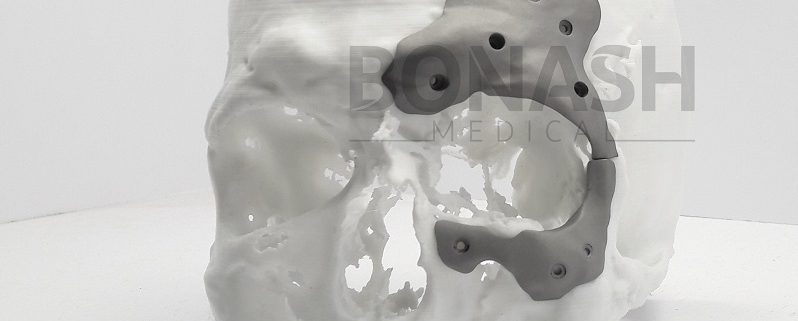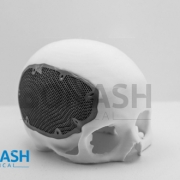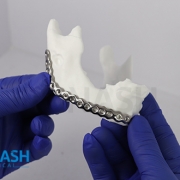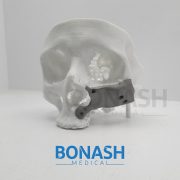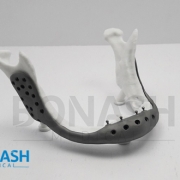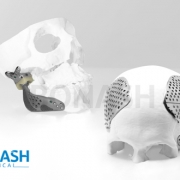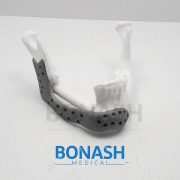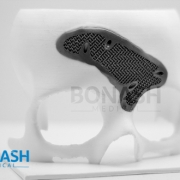Orbital wall defects
Customized titanium reconstruction of post-traumatic orbital wall defects: a review of 22 cases
S. F. Mustafa, P. L. Evans, A. Bocca, D. W. Patton, A. W. Sugar, P. W. Baxter.
Int. J. Oral Maxillofac. Surg. 2011; 40: 1357–1362
Abstract: The authors present the clinical results of their method of customized reconstruction of orbital wall defects using titanium mesh or sheet. High resolution computed tomography (CT) data are imported and processed to create a threedimensional (3D) image which is used to reconstruct the orbital defect. Mirror imaging of the air in the contralateral maxillary sinus is used to overcome artefact defects in the floor. A stereolithographic model is constructed, from which titanium mesh or sheet is shaped and sized to the required contours for implantation. Twentytwo patients were treated using this technique from 2003 to 2008. Postoperatively 10 patients reported early resolution of their diplopia. Six patients noticed significant improvement of their symptoms with mild residual diplopia in one direction only and at the extremes of gaze at final review. One patient required ocular muscle surgery. Enophthalmos resolved in eight of the nine cases. No patients developed enophthalmos or diplopia as a postoperative complication. The use of titanium mesh for orbital floor reconstruction has been shown to be safe and effective. Customized titanium implants accurately reproduce orbital contours thus restoring orbital volume. This reduces operative time and improves the functional and aesthetic outcomes of post-traumatic orbital reconstruction.
Please note:
This abstract was published on Bonash Medical’s website since its content was related to the company’s products. There is no relation between Bonash Medical and the authors. To have full access to the article, please refer to relevant reference.

